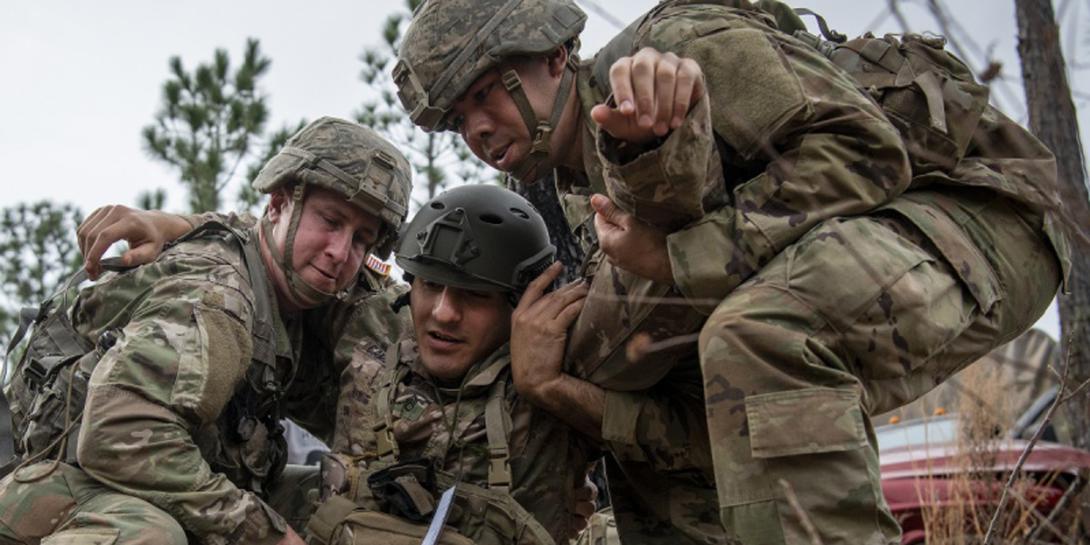U.S. Army Sets Aside Money for Joint All-Domain Operations
Released this week, the Army’s Fiscal Year 2021 budget request of $178 billion adds focus to supporting Joint all-domain operations. While the Army’s funding for FY 2017-2018 centered on readiness and recovery, addressing "must-pay" bills and filling gaps in its force structure, the Army’s heavy focus for FY 2019-2020 is on increasing lethality and implementing six modernization priorities. For FY 2021, however, the service is shifting to support the U.S. Defense Department’s pursuit of Joint all-domain operations and the integrated command and control technologies to support activities across sea, land, air, space and cyberspace.
“The Army stands ready now, and in the future, to support Joint all-domain large-scale combat operations, and deploy, fight and win our nation’s wars,” stated the Army’s FY 2021 Budget Overview, released at the Pentagon on February 10 by Maj. Gen. Paul Chamberlain, USA, deputy assistant secretary of the Army; director, Army Budget, and other officials.
Currently, the Army has 187,000 soldiers serving overseas in 140 countries. The soldiers are supporting Operation Freedom’s Sentinel in Afghanistan, Operation Inherent Resolve in Iraq, the European Deterrence Initiative, Operation Spartan Shield in the Arabian Gulf region, and counterterrorism operations in other areas. To support these overseas contingency operations, or OCO, the Army has requested $24,913 million in FY 2021.
Meanwhile, the Army will continue to develop its modernization goals across the service in FY 2021 with the Army Futures Command leading the charge. Through 31 lines of effort and a funding request of $10,654 million in FY 2021, the service’s eight cross-functional teams (CFTs), as well as the Rapid Capabilities and Critical Technologies Office, or RCCTO, are implementing modernization efforts concerning: long-range precision fires; next-generation combat vehicles; future vertical lift platforms; a modern Army computer network; assured positioning, navigation and timing; air and missile defense capabilities; synthetic training environment; and improved soldier lethality.
This video visually illustrates 1st Theater Sustainment Command's lines of effort, set the theater, security cooperation, sustain unified land operations, and enhance the force. (U.S. Army video by Bianka Lathan)
In addition, as part of its modernization, the service aims to field its first hypersonic platform with ground and support equipment, conduct firing testing in FY 2022, and field combat rounds in FY 2023, according to the budget plan. The Army hopes to field its first directed energy mobile short-range air defense system, known as a DE-MSHORAD system, within 10 years. The combat laser weapon would be mounted on Stryker vehicles. Moreover, the service is pursuing indirect fire protection systems. The mobile, ground-based weapons would protect against unmanned aircraft and cruise missile attacks, according to the service.
The CFTs also will pursue "signature efforts" for Joint all-domain operations, with more than $9 billion in realigned funds. “The CFTs bring together various stakeholders [from] requirements, acquisition, science and technology, testing and logistics, to develop requirements in support of Joint all-domain operations in a timely manner,” stated the budget document. “[The plan] initiates early prototyping, testing and touch point with soldiers from the operational force, ensuring the solutions generated are the right ones.”
Speaking to reporters during a budget briefing at the Pentagon on February 11, Gen. Chamberlain explained that the Army was looking to the Air Force’s efforts concerning the development of Joint all-domain command and control (JADC2), the underlying system that will enable operations across all warfighting domains with all of the services. “The JADC2 is an Air Force effort and we will participate in it,” Gen. Chamberlain stated. “It is in the very early stages.”
He confirmed that the Army would be participating in the Air Force’s second JADC2 exercise to be held in April but was still determining what their role would be. “[We are waiting for] the development of the Joint warfighting concept, and then we will figure out how we will plug into that,” Gen. Chamberlain said.
Concerning research, development and acquisition (RDA), the service is requesting $34.3 billion for FY 2021. The RDA efforts will be focused on the service’s six modernization priorities and filling “critical capability gaps,” such as development of land-based hypersonic missiles, future attack reconnaissance aircraft and low-earth-orbit technologies, the service noted. The Army also will address modernizing its key vehicle platforms, including the Bradley, Stryker, Abrams and Paladin. The funding supports acquisition of critical missiles and mobile short-range air defense system, known as M-SHORAD systems, as well as improved soldier lethality and a modern integrated tactical network.
As part of RDA, research, development, test and evaluation (RDT&E) funding of $12,770 million would support all phases of capability development, from basic research ($463 million), applied research ($923 million), advanced development ($1,204 million), demonstration ($3,442 million), engineering ($3,302 million), testing ($1,337 million) and operational development ($2,073 million).
In addition, the Army’s RDT&E amount includes $46 million for defensive cyber operations (DCO) software and digital technology development as part of a Defense Department pilot program. “The request is for the full, iterative life cycle of the Army’s DCO software for development, procurement, assurance, deployment, modifications and continuous software improvement,” the budget document stated.





Comments